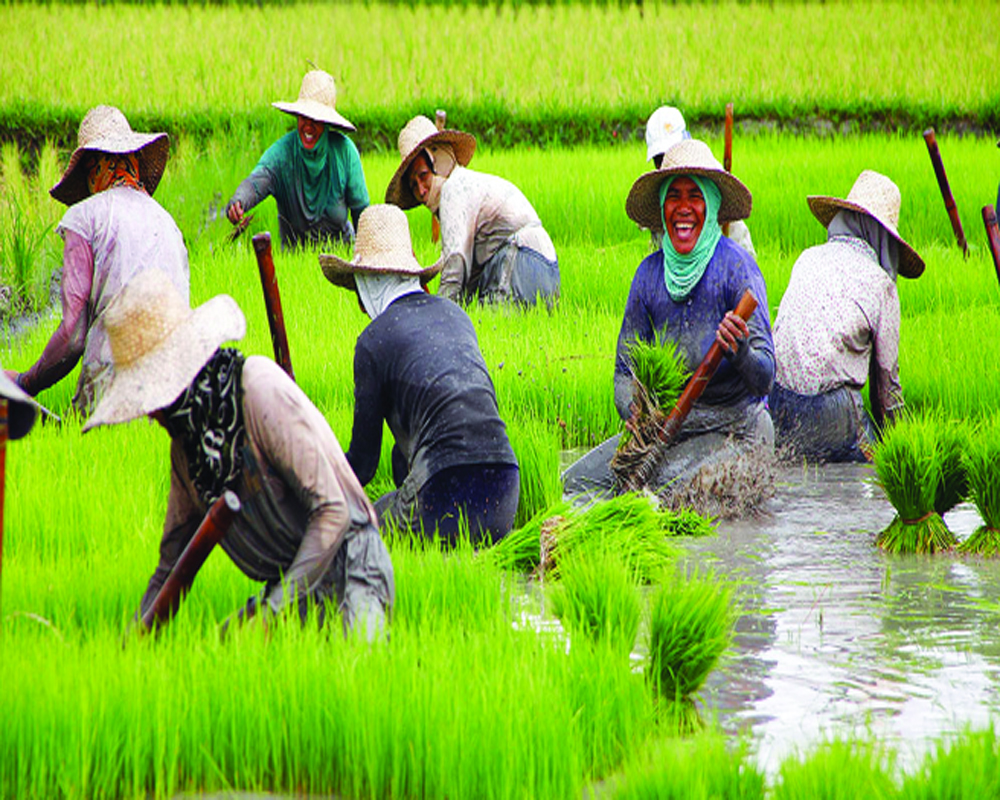The Northeast is a zone of immense potential, which is yet to be fully tapped and would lead to India's economic development
Prime Minister Narendra Modi has recently suggested to the country’s farmers 35 new and varied types of vegetations that are of high yield or high value, or both. Among the crops the Prime Minister has suggested for futuristic agricultural development are chickpea, wilt and sterility mosaic resistant pigeonpea, early maturing variety of soya bean, disease resistant varieties of rice, bio-fortified varieties of wheat, pearl millet, maize, quinoa, buckwheat, winged bean and faba bean, among others.
Apart from prospects for India’s agricultural, this suggestion could just be the answer for a prosperous eastern India as well. In a recently published book, titled Had Patel Been Prime Minister, this author has delved into how Sardar Vallabhbhai Patel, had he been the country’s PM instead of Jawaharlal Nehru, would have treated the issue of India’s economic development and particularly that of eastern India. Patel had novel ideas. He would have notionally treated eastern India distinctly for farming and agriculture. In his time, the 35 new crops suggested by our current Prime Minister might not have been known. Yet, the concept that there are plants that are drought resistant, inimical to pests or excessive rain or flooding was indeed known.
The thrust of this submission is to reiterate an important aspect of Sardar Patel’s outlook. He was from a farmer’s family and well acquainted with farmers’ issues and problems. In fact, he organised and led the Bardoli Satyagraha as farmers’ revolt against excessive taxes in the face of financial difficulties in 1928. The movement made Sardar Patel a national leader. Prior to his political career and role in the country’s independence movement, Vallabhbhai was also a prominent lawyer in Ahmedabad and not unfamiliar with industry. Moreover, he was aware that to develop eastern India, agriculture was the key, not industry.
The Seven Sisters of northeastern India, as well as people of Assam, are also comfortable with farming. Uncannily, West Bengal, truly speaking, is also similar. Prior to Independence, most industries in the State had been promoted by the British and very few by indigenous people. When the British disinvested after 1947, not a single enterprise was bought by any local entrepreneur save one, namely Jardine Henderson, which was invested in by one Gujarati from Prayagraj (Uttar Pradesh). The rest went to entrepreneurs from Rajasthan.
Individuals may or may not realise it, but this was not desirable. The reason was that there was a divide whereby the locals felt that outsiders were the maliks (owners) while they had become workers. A few of them, from a zamindari background, ironically went on to become trade union leaders rather than entrepreneurs. This unfortunate divide, instead of promoting more and better industries, actually destroyed industry in West Bengal. A State from which in 1947 was the paradise of industries went on to become their graveyard by 1977.
Bihar and Jharkhand too, are primarily inclined towards farming. At the same time, most of the region is well fed with water, riverine or through rainfall. Shillong in Meghalaya, for instance, may be at an altitude, but Cherrapunji in the same State is also quite nearby.
In spite of all these factors, no special emphasis has been laid on farming in the east. It is not realised in our country that industry is the employment of machines and not so much of men. Machines earn depreciation for the company whereas the cost of workers, on account of annual increments, keeps increasing. As a result, the focus of an efficient industrialist is oriented towards reducing the quantity of the workforce, even if this has to be done by automation. It is true that the indirect employment that comes in the wake of establishing a factory or industry, like the development of transport and communication, housing, hotels and ancillary industries is useful. Nevertheless, the investment required to employ one person directly is estimated to be Rs2 crore or more. In contrast, tourism, for example, would entail a cost of only Rs3-5 lakh per head.
In India’s northeast, the current productivity of the land as compared to its actual potential is low. Assam, apart from tea which it is famous for, also produces excellent silk. Rubber plantation is becoming a popular commercial plantation in Tripura. Arunachal Pradesh is ideal for horticulture and fruit orchards apart from rice, maize, millet, wheat, pulses, sugarcane, ginger and oilseeds. Plantation crops such as premium coffee, cardamom and tea are grown in hilly areas of Nagaland, while Mizoram specialises in floriculture and horticulture, in which it has become an exporter as well. The State also has good potential for forestry, fisheries and sericulture. Climatic conditions in Meghalaya permit a large variety of horticulture crops, including fruits, vegetables, flowers, spices, mushrooms and medicinal plants. Manipur’s climate makes it well suited for horticulture, especially rare and exotic medicinal plants and herbs. Sikkim is home to the cultivation of crops such as maize, millet, wheat, barley, oranges, tea and cardamom. The State produces more cardamom than any other Indian State and is home to the largest cultivated area of cardamom.
(This is part of an ongoing series on India making multi-dimensional advancement across States and nations).
(The writer is a well-known columnist, an author and a former member of the Rajya Sabha. The views expressed are personal.)


























